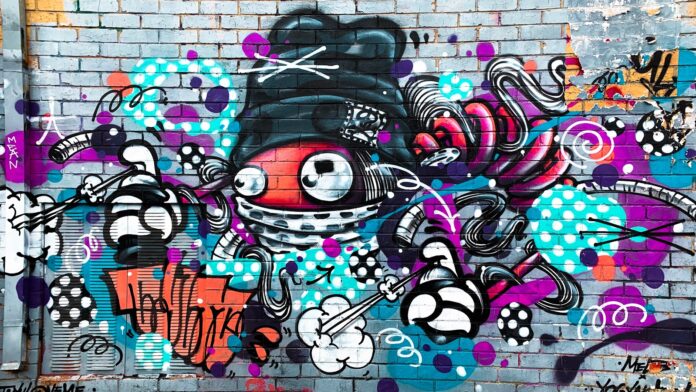In recent decades, spray-paint graffiti art has emerged as a multifaceted cultural phenomenon, defying traditional artistic boundaries and engaging complex societal discourses. This article aims to explore its evolution, significance, and the myriad implications that accompany its practice. From the streets to galleries, graffiti evokes both admiration and controversy, serving as a canvas for marginalized voices and as a medium of social protest.
The evolution of spray-paint graffiti art can be traced back to the late 1960s in the United States, where burgeoning urban landscapes mirrored the frustrations and aspirations of youth subcultures. Artists like Cornbread and Taki 183 began marking their territories with stylized tags, a practice that functioned not only as a declaration of presence but also as a form of social commentary. This nascent movement burgeoned into the vibrant form we recognize today, influenced by hip-hop culture, social movements, and the ever-present need for expression in public spaces.
As graffiti art proliferated, it garnered a complex reputation, oscillating between vandalism and legitimate artistic expression. Critics often frame graffiti as an act of defiance against societal norms — a criminal imposition that disrupts public order. Conversely, advocates argue for its recognition as a legitimate art form, one that fosters dialogue, challenges authority, and encapsulates the zeitgeist of urban life. Thus, the dichotomy of views surrounding graffiti art invites an examination of its implications on cultural identity and public discourse.
One of the most compelling aspects of spray-paint graffiti is its ability to convey poignant social messages. As a medium typically associated with the underprivileged or the disenfranchised, graffiti serves as a platform for marginalized communities to assert their presence and share their narratives. The striking imageries and provocatively worded phrases become visual rhetoric, inviting passersby to engage with political and social issues. Take, for instance, the works of artists like Banksy, whose satirical pieces encapsulate critiques of capitalism, war, and societal apathy. Through clever visuals and poignant insights, graffiti has the power to disrupt the mundane flow of urban life and provoke critical reflection.
The role of women in graffiti art warrants a special mention within this discourse. Historically, female artists have been underrepresented in the graffiti scene, often relegated to the sidelines despite making substantial contributions. However, contemporary movements have seen women reclaiming public spaces and redefining graffiti through their unique perspectives. Artists like Lady Pink and Swoon have emerged as powerful figures, using their art to address issues such as gender inequality and social justice. The incorporation of feminist themes in graffiti not only amplifies women’s voices but also enriches the broader artistic narrative.
Furthermore, the intersection of graffiti art and digital technology has ushered in new potentials for expression. The advent of social media platforms has allowed graffiti artists to disseminate their work far beyond the confines of urban landscapes, engaging global audiences in ways previously unimaginable. Digital mediums facilitate the archiving of ephemeral works, ensuring that even the most transient pieces can achieve lasting impact. Yet, this advancement also raises questions regarding authenticity, ownership, and the commercialization of street art. As graffiti morphs into a digital commodity, the original intent of grassroots expression may become overshadowed by market forces, undermining its original subversion of established norms.
Moreover, the commercial success of graffiti art raises critical ethical dilemmas. As contemporary galleries increasingly showcase works of renowned graffiti artists, the very essence of street art as a rebellious form of expression faces commodification. Auction houses have profited handsomely from selling the works of graffiti artists, sometimes at the expense of the very communities that birthed this art form. This phenomenon calls for a nuanced understanding of the relationship between art and commerce, especially when artwork traverses from the streets to auction floors, where values are dictated by market demand rather than cultural significance.
The connection between graffiti art and urban regeneration provides another avenue for exploration. Many cities have begun to embrace graffiti as a vital component of urban identity and revitalization. Murals and large-scale installations often transform neglected spaces into sites of cultural significance, attracting tourism and community engagement. The integration of graffiti into urban planning practices can help foster a sense of belonging and ownership among residents, turning previously stigmatized areas into celebrated communal spaces. However, this integration must be approached with caution. The risk of gentrification looms large when art becomes a mere instrument for economic development, potentially displacing the very communities that have nurtured its growth.
Public perception of spray-paint graffiti art remains notoriously polarized, conditioned by cultural, social, and geographical contexts. While some regard it as a beacon of authenticity and creative dissent, others view it through the lens of law and order. Understanding this dichotomy requires an appreciation of the complex dynamics at play. Cities worldwide have adopted various strategies in response to graffiti, from outright bans to designated legal walls and art programs aimed at harnessing the potential of street art. These diverse approaches reflect a city’s attitude towards public expression, inherently revealing the tension between artistic freedom and civic responsibility.
In conclusion, spray-paint graffiti art stands as a pivotal cultural expression that transcends the mere act of painting and encompasses layers of societal implications. It embodies the struggle for identity, a critique of prevailing socio-political structures, and a vehicle for community engagement. As its boundaries continue to evolve, it is essential to recognize graffiti not just as a field of vibrant colors and shapes, but as an integral discourse on art, identity, and the collective human experience. The voices expressed through spray paint challenge us to reflect upon our surroundings and the narratives that shape our urban landscapes. In understanding graffiti art, we unearth not only the stories of those who create but also the underlying ethos of the communities they represent.





























